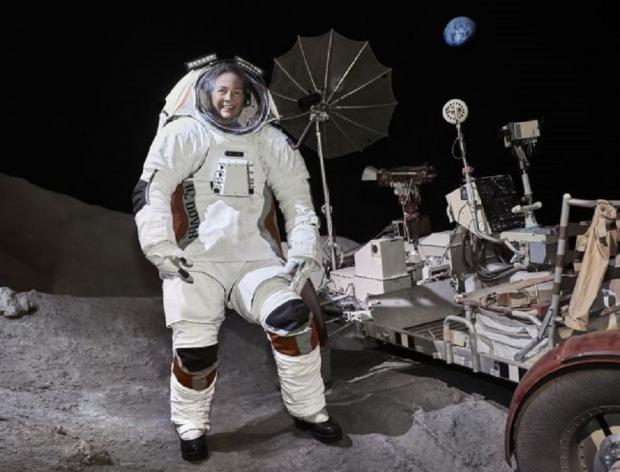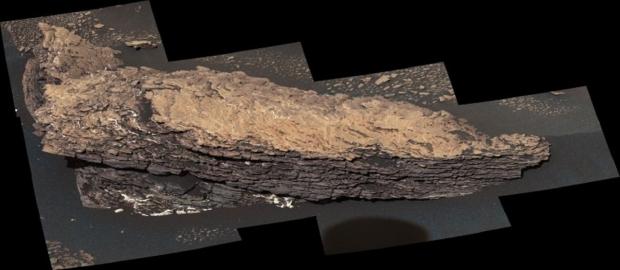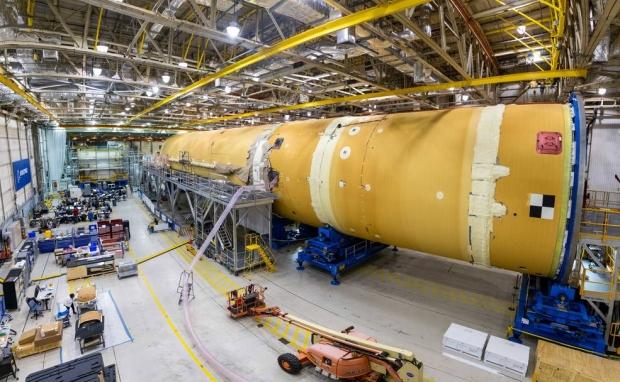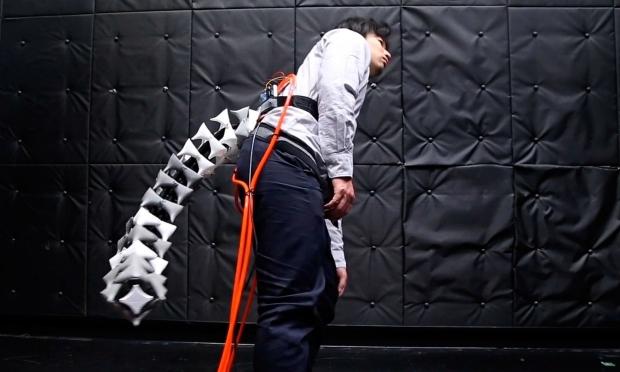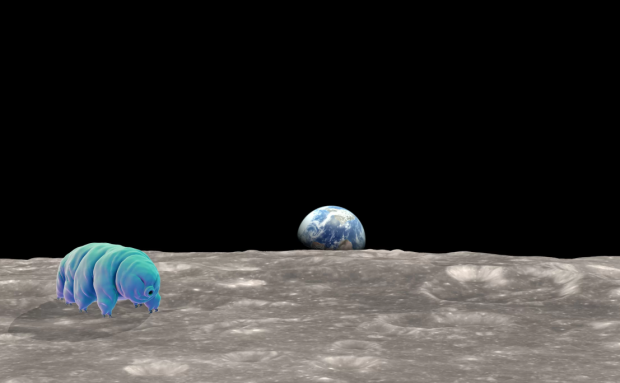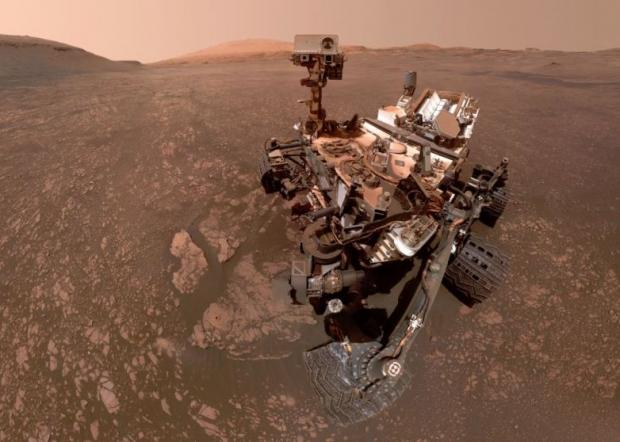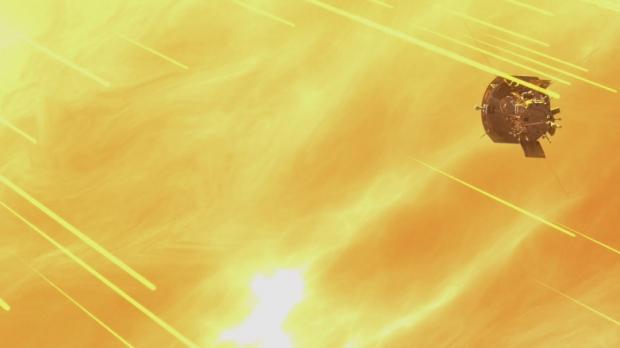Science, Space, Health & Robotics News - Page 393
Astronauts plan to walk on Mars with this next-gen spacesuit
A brand new next-generation spacesuit prototype has been created and could be what astronauts wear when they are traveling back to the Moon or better yet, to Mars.
ILC Dover and Collins Aerospace have worked together to develop the next-generation spacesuit that could take astronauts far and wide in our solar system. The new suit is called 'Astro' and features upgrades across the board when compared to the spacesuit that astronauts used to land on the Moon. According to the announcement, 'Astro' was designed and built with future crewed space missions in mind, these include the planned lunar landing by 2024 and even the future Mars landing.
The new 'Astro' suit boasts a number of improvements for the user, including mobility, improved carbon dioxide-removal tech that allows for longer missions, improved motors, electronics, torso size/design and much more. The suit also comes with a "life-support backpack" that will regulate pressure while also providing oxygen and cooling for the user. 'Astro' can be used for both spacewalks and surface walks by simply switching its mobility configuration.
Continue reading: Astronauts plan to walk on Mars with this next-gen spacesuit (full post)
NASA find Mars rock that could prove Martian flowing water
NASA's Curiosity rover is back at it again with another Mars discovery that could prove the existence of water on the Red Planet. This discovery is none other than a extremely good-looking rock.
While rocks are basically everywhere on Earth and us humans don't really pay much attention to them, NASA scientists are the complete opposite for rock discoveries on Mars. NASA's Curiosity rover is currently located in the Gale Crater and has recently discovered a new rock that could shed some light on whether or not the Red Planet harbored or still harbors water.
The rock has been nicknamed "Strathdon" and its features are scale-like which could suggest that Mars once had flowing water that eroded this rock at different periods of time. Each of the levels of scales have been estimated to be periods of time when Mars once went from wet to dry - forming a rocky layer that we can see above. Valerie Fox of Caltech has said "We're seeing an evolution in the ancient lake environment recorded in these rocks. It wasn't just a static lake. It's helping us move from a simplistic view of Mars going from wet to dry. Instead of a linear process, the history of water was more complicated."
Continue reading: NASA find Mars rock that could prove Martian flowing water (full post)
NASA to add final & most complex part to Orion spacecraft
NASA is currently in the midst of building their new rocket that will be taking some extremely lucky astronauts to the moon by 2024. That rocket is now having its final parts installed and the completion schedule is still on track by the end of the year.
A new announcement has come out of NASA, and this time NASA Administrator, Jim Bridenstine has invited US press to the Michoud Assembly Facility in New Orleans to view the rocket that will be powering NASA's upcoming Artemis 1 lunar mission. According to the announcement, engineers are currently equipping the Orion rocket with its final section to the core stage of the rocket.
This final section has been described by NASA as the most complex part of the building procedure and is actually the most complex core NASA has ever built. Regardless of its complexities, NASA says that they are still very much on schedule for it to be completed by the end of the year. The core's constitution is two liquid propellant tanks and four RS-25 engines, with this combination the rocket will produce more than two million pounds of thrust. NASA plan on landing the first women and the next man on the Moon by 2024.
Continue reading: NASA to add final & most complex part to Orion spacecraft (full post)
So ROBOTIC TAILS are now a thing, will improve your balance
If you thought by now we'd have flying cars, Moon bases and nanotechnology making us like Superman or something -- you know you're wrong. Your consolation prize? A robotic tail called the Arque.
Scientists from the Keio University Graduate School of Media Design have designed a robotic tail that makes us more of an animal-machine-human hybrid, and it could actually have a purpose in this world. The robotic tail was inspired by the grippy, curly end of a seahorse -- something instantly apparent.
The robotic tail uses spring-loaded joints that are connected to a vertebrae, packing pneumatic artificial muscles that run through the inside of it and allow for easy movement. An air compressor is used to actuate the muscles, which lets the robotic tail move in 8 different directions.
Continue reading: So ROBOTIC TAILS are now a thing, will improve your balance (full post)
39 ancient galaxies found, base universe knowledge shaken
What is the universe? That question is currently being answered by numerous persons across the planet and a recent discovery of 39 ancient galaxies could add to the equation of answering that very question.
According to some researchers out of Institute of Astronomy at the University of Tokyo, a recent discovery has been made using The Hubble Space Telescope and has shed some light on some light on some pretty big questions in this scientific field. The astronomers have found 39 ancient galaxies that were around during the first 2 billion years of the universe forming. Even though The Hubble Space Telescope unlocked better vision into the cosmos, it cannot see everything and according to Professor Kotaro Kohno, "The light from these galaxies is very faint, with long wavelengths invisible to our eyes and undetectable by Hubble."
The discovery of these galaxies has led researchers to believe they will be able to get a better understanding of how dark matter is connected to the supermassive blackholes that are at the center of each of these galaxies. Researcher, Tao Wang said "This is the first time that such a large population of massive galaxies was confirmed during the first 2 billion years of the 13.7-billion-year life of the universe. These were previously invisible to us. This finding contravenes current models for that period of cosmic evolution, and will help to add some details, which have been missing until now."
Continue reading: 39 ancient galaxies found, base universe knowledge shaken (full post)
NASA snap image of edge-on galaxy similar to our Milky Way
NASA has used their Spitzer Space Telescope to capture an image of a distant galaxy, with this image scientists can now attempt to gather a better understanding of this galaxy works even though it will be challenging due to its angle.
The galaxy is called NGC 5866 and from the image that due to the way the galaxy is positioned we can only see its outer edge. This means we can only see a extremely small fraction of what the galaxy actually contains. According to NASA's Jet Propulsion Laboratory new blog post, scientists are "Trying to learn about the history and shape of NGC 5866 is challenging due to its orientation. Our view of this galaxy is somewhat like our view of the Milky Way galaxy: Because Earth lies inside the Milky Way, we can see it only edge-on rather than face-on."
The blog post continues and says "But our proximity to the rest of the Milky Way has allowed astronomers to reconstruct what our galaxy would look like viewed face-on." A quick history lesson on the Spitzer Space Telescope: This space telescope has been in use for nearly 16 years now which is much longer than its initial mission time. According to NASA, they are planning on retiring the space telescope as it is only operational for a few hours a day since it requires huge amounts of time to recharge.
Continue reading: NASA snap image of edge-on galaxy similar to our Milky Way (full post)
The Moon now has life... human DNA & Tardigrade crash lands
As humans we have no idea if there is life outside of our planet, but what we do know is that there is now at least some form of life on the Moon's surface and while it may not be alien, it certainly looks alien.
The Israeli spacecraft Beresheet crashed into the Moon during a failed landing attempt on April 11th, the cargo that Baresheet was carrying was human DNA samples and tardigrades. The lander was also carrying 30 million very small digitized pages of information about human society and culture.
If you don't know what a tardigrade is, it's a microscopic moss piglet that measure between 0.002 and 0.05 inches (0.05 to 1.2 millimeters) long. Not only are these little forms of life tiny, but they are almost indestructible as they can survive extreme temperatures of 328 degrees Fahrenheit (minus 200 degrees Celsius), and more than 300 F (149 C). They can also survive exposure to radiation and the vacuum of space.
Continue reading: The Moon now has life... human DNA & Tardigrade crash lands (full post)
7 years of Mars secrets revealed by NASA's 'Curiosity' rover
Back in 2011, NASA launched their 'Curiosity' rover from Earth with the mission of landing it on Mars to scour the surface in search for new information. It now has been there seven years, and its still kicking about doing research.
The 'Curiosity' rover spent several months floating through space before safely landing Mars' surface on August 6th, 2012. NASA and Jet Proplusion Laboratory and giving 'Curiosity' a birthday celebration and by doing this we have learned where Curiosity is at the moment and what it is doing.
According to a new blog post, Curiosity is currently stationed in a spot known as the "clay-bearing unit" which is in inside the Gale Crater. The rover is currently using drills to get some of the soil, and with these samples scientists will be able to determine what the conditions of the crater were like long ago. Scientists know that Mars once had traces of what seems to be water, but it is still unclear if this water harbored any form of life whether it be microbial, or intelligent.
Continue reading: 7 years of Mars secrets revealed by NASA's 'Curiosity' rover (full post)
Astronomers find ancient Big Bang 'time machine' star
A new discovery has been made by astronomers scouring the observable universe, they have run into what has been called a 'time machine' that takes us back to some of the earliest stars when the universe formed.
According to a recent research that has been published in Monthly Notices of the Royal Astronomical Society: Letters, astronomers from the Australian National University have discovered one of the first stars that formed after the universes Big Bang. Lead study author Thomas Nordlander, spoke out about this research saying, "We've found a time machine that takes us back to the universe's earliest stars."
Since the Big Bang occurred 13.8 billion years ago, many of the stars that formed in the early days were gigantic in comparison to our sun. A bio-product of the stars being extremely big is that they are also short-lived. Once the stars decay to the point of their supernova explosion many of the elements are ejected into space, this is what astronomers search for and have recently found.
Continue reading: Astronomers find ancient Big Bang 'time machine' star (full post)
NASA just acquired its first HUGE data dump from sun probe
NASA has announced that they have received the first data dump from their solar probe they launched back in August 12th, 2018.
Since the Parker Solar Probe is designed to observe the sun and is currently caught in its immense gravitational pull, the probe can only send back data chunks at certain times. NASA has just received their first data dump from the probe and it's 50% bigger than what they expected. 20GB of data was downloaded from the first and second pass of the probe going around the sun.
Nickalaus Pinkine, Parker Solar Probe mission operations manager said "All of the expected science data collected through the first and second encounters is now on the ground. As we learned more about operating in this environment and these orbits, the team did a great job of increasing data downloads of the information gathered by the spacecraft's amazing instruments."
Continue reading: NASA just acquired its first HUGE data dump from sun probe (full post)


